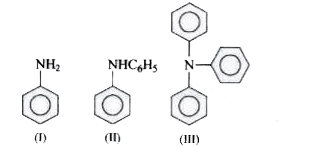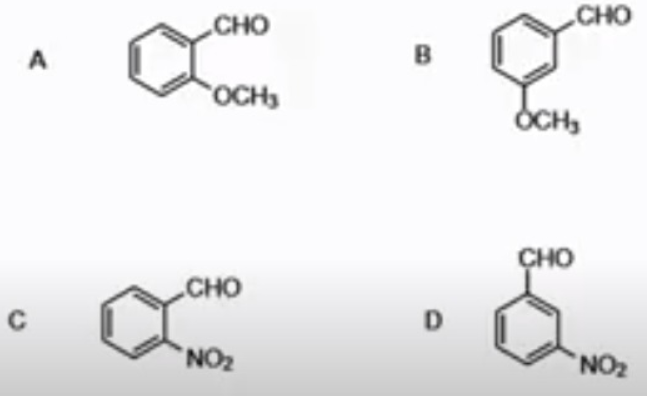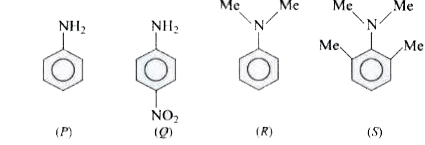Arrange the following polymers in an increasing order of intermolecular forces , fibre, plastic , elastomer .
Elastomer < Fibre < Plastic
Elastomer < Plastic < Fibre
Plastic < Elastomer < Fibre
Fibre < Elastomer < Plastic
The correct Answer is:B
To arrange the polymers (fiber, plastic, and elastomer) in increasing order of intermolecular forces, we can follow these steps:
Step 1: Understand the Types of Polymers
- Elastomers: These are polymers that have elastic properties. They can stretch and return to their original shape. The intermolecular forces present in elastomers are generally weak, primarily Van der Waals forces (or London dispersion forces).
Step 2: Analyze the Intermolecular Forces in Each Polymer
- Fibers: These polymers have strong intermolecular forces, often due to hydrogen bonding. This makes them strong and durable.
- Plastics: Plastics have intermolecular forces that are intermediate between elastomers and fibers. They can have some degree of cross-linking and can exhibit various types of interactions.
Step 3: Arrange the Polymers Based on Intermolecular Forces
- Since elastomers have the weakest intermolecular forces, they come first.
- Next, plastics have intermediate intermolecular forces.
- Finally, fibers have the strongest intermolecular forces.
Final Arrangement
Thus, the increasing order of intermolecular forces is:
Elastomer < Plastic < Fiber
- Elastomers: These are polymers that have elastic properties. They can stretch and return to their original shape. The intermolecular forces present in elastomers are generally weak, primarily Van der Waals forces (or London dispersion forces).
Step 2: Analyze the Intermolecular Forces in Each Polymer
- Fibers: These polymers have strong intermolecular forces, often due to hydrogen bonding. This makes them strong and durable.
- Plastics: Plastics have intermolecular forces that are intermediate between elastomers and fibers. They can have some degree of cross-linking and can exhibit various types of interactions.
- Since elastomers have the weakest intermolecular forces, they come first.
- Next, plastics have intermediate intermolecular forces.
- Finally, fibers have the strongest intermolecular forces.
Thus, the increasing order of intermolecular forces is:
Elastomer < Plastic < Fiber
Topper's Solved these Questions
- BOOK - NCERT FINGERTPS ENGLISHCHAPTER - POLYMERS EXERCISE - EXEMPLAR PROBLEMS9videos
POLYMERS
- BOOK - NCERT FINGERTPS ENGLISHCHAPTER - POLYMERS EXERCISE - ASSERTION AND REASON15videos
POLYMERS
- BOOK - NCERT FINGERTPS ENGLISHCHAPTER - HALOALKANES AND HALOARENESEXERCISE - NCERT Exemplar27videos
HALOALKANES AND HALOARENES
- BOOK - NCERT FINGERTPS ENGLISHCHAPTER - PRACTICE PAPER -1EXERCISE - Practice Paper 150videos
PRACTICE PAPER -1
Similar Questions
Arrange the following in increasing order of acidic strength
 View Solution
View Solution(i) What is the role of Sulphur in the vulcanization of rubber ?
(ii) Identify the monomers in the following polymer :

(ii) Arrange the following polymers in the increasing order of their intermolecular forces : Terylene, Polyethene, Neoprene.View Solution
Knowledge Check
- Question 1 - Select One
Arrange the following compounds in increasing order of acidity :
 AP>Q>R>SBS>Q>R>PCS>R>P>QDR>S>P>Q
AP>Q>R>SBS>Q>R>PCS>R>P>QDR>S>P>Q - Question 2 - Select One
Arrange the following in increasing order of basicity.
 AI<II<IIIBIII<I<IICIII<II<IDII<III<I
AI<II<IIIBIII<I<IICIII<II<IDII<III<I - Question 3 - Select One
Arrange the following in increasing order of basicity :
 AS<Q<R<PBS<Q<P<RCS<R<P<QDP<Q<R<S
AS<Q<R<PBS<Q<P<RCS<R<P<QDP<Q<R<S
Arrange the following in the increasing order of their acidity.
 View Solution
View SolutionArrange the following polymers in increasing order of their intermolecular forces :
(i) Nylon 6 6, Buna-S, Polythene.
(ii) Nylon 6, Neoprene, Polyvinyl chloride.View SolutionArrange the following in increasing order of reaction with HCN
 View Solution
View SolutionArrange the following in increasing order of stability.
 View Solution
View SolutionArrange the following compounds in increasing order of basicity :
 View Solution
View Solution

